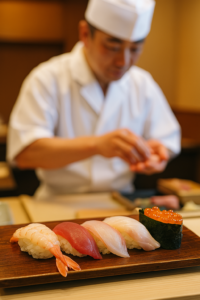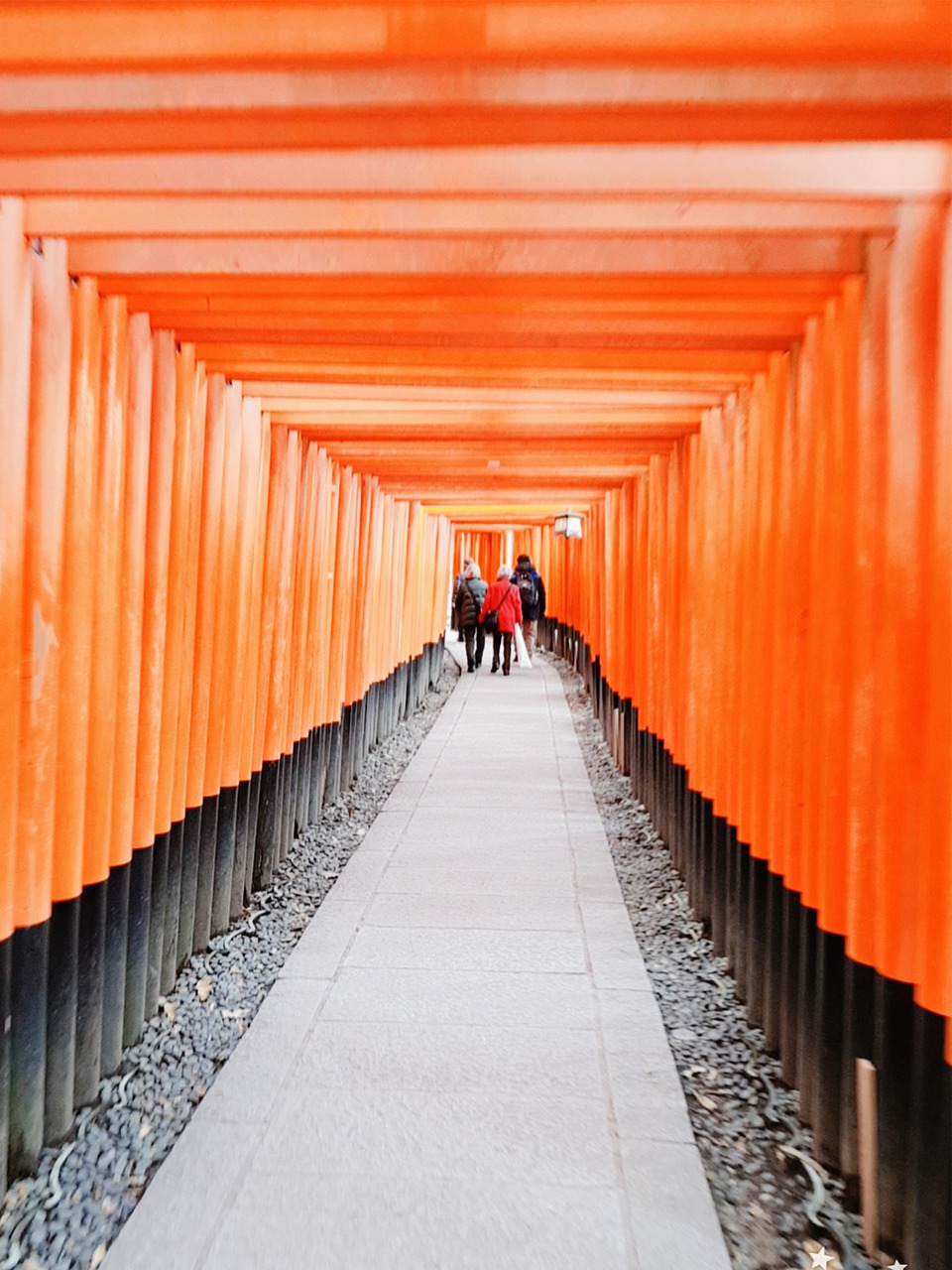🍣 A Journey into Real Sushi: A Gentle Guide for Foreign Visitors
“I thought I knew sushi. But the sushi I had in Japan was something entirely different.”
This is something we often hear from international travelers visiting Japan. While sushi is a globally loved cuisine, its true essence isn’t just in its appearance or luxury. In this article, we’ll walk you through what sushi truly means in Japan—its types, manners, history, daily presence in Japanese life, regional varieties, and what makes it not just a meal, but a moment to remember.
- 🕰 A Brief History of Sushi: From Preserved Fish to Handcrafted Art
- 🍥 Types of Sushi in Japan
- 🇯🇵 How Japanese Sushi Differs from Overseas Sushi
- ✅ Sushi Etiquette: How to Eat It Right
- 🍽 When Do Japanese People Eat Sushi?
- 🗾 Regional Variations in Sushi
- 🛍 Can You Buy Sushi at Convenience Stores?
- 🌸 Sushi Is More Than Just Food—It’s a Cultural Experience
🕰 A Brief History of Sushi: From Preserved Fish to Handcrafted Art
Modern sushi, particularly the kind served at counter-style restaurants, originated in Edo (now Tokyo) as a form of fast food. But sushi’s roots go much deeper. In ancient Asia, people preserved freshwater fish by fermenting it with rice and salt. This evolved into “narezushi,” Japan’s earliest form of sushi. It was more of a preservation method than a delicacy.
During the Edo period (1603–1868), vinegar was added to rice to mimic fermentation while shortening the preparation time. This led to the creation of “nigiri sushi,” made and eaten quickly at street-side stalls. Sushi, as we know it today, was born from the fast-paced lifestyle of Edo townsfolk.
Interestingly, sushi was not always considered a luxury. It started as everyday street food. Over the years, it has evolved into a refined experience with regional variations and seasonal subtleties. Today, sushi represents the Japanese values of craftsmanship, respect for ingredients, and quiet elegance.
🍥 Types of Sushi in Japan
- Nigiri-zushi: Hand-pressed sushi with a slice of fish atop vinegared rice.
- Maki-zushi: Rolled sushi with rice and ingredients wrapped in seaweed.
- Gunkan-maki: Seaweed-wrapped sushi topped with soft ingredients like roe or sea urchin.
- Oshi-zushi: Pressed sushi shaped in a box mold, popular in western Japan.
- Chirashi-zushi: Vinegared rice with assorted toppings, often for celebrations.
- Temari-zushi: Small, ball-shaped sushi, often served at parties or picnics.
🇯🇵 How Japanese Sushi Differs from Overseas Sushi
Abroad, you might see sushi with avocado, cream cheese, or spicy sauces. These fusion styles are popular in the West but are not typically served in traditional sushi restaurants in Japan.
Japanese sushi prioritizes simplicity, natural flavor, and seasonality. The freshness of the fish, the balance of vinegar in the rice, the temperature at which it’s served—these elements are treated with the utmost care.
For example, salmon—hugely popular internationally—was not traditionally part of Japanese sushi until relatively recently. In contrast, Japan embraces local and seasonal fish such as kohada, aji, and uni.
✅ Sushi Etiquette: How to Eat It Right
- Dip the fish side, not the rice, in soy sauce.
- Gari (pickled ginger) is a palate cleanser.
- Eat sushi in one bite when possible.
- Omakase: trust the chef’s order and flow.
- Hands or chopsticks are both acceptable.
- Say “Itadakimasu” before and “Gochisosama” after eating.
🍽 When Do Japanese People Eat Sushi?
Sushi is not eaten every day, but it’s also not reserved for rare occasions. It’s a treat for weekends, family gatherings, and celebrations.
▶ Kaiten-zushi
Affordable, fun, and delicious. Popular with families and friends. Many Japanese visit once a month or more.
▶ Traditional Counter Sushi
For dates, business dinners, or anniversaries. Focuses on seasonality, elegance, and human connection with the chef.
▶ Homemade Temaki Sushi
A home tradition. Everyone gathers around the table to make their own sushi. Great for birthdays and holidays.
🗾 Regional Variations in Sushi
- Osaka: Pressed sushi with beautiful presentation.
- Kanazawa: Uses local fish like nodoguro and sweet shrimp.
- Hokkaido: Known for ultra-fresh seafood and large portions.
- Kyushu: Slightly sweet rice and regional flavors.
- Amami & Kagoshima: Distinct sweet rice and local fish.
🛍 Can You Buy Sushi at Convenience Stores?
Yes! 7-Eleven, Lawson, and other chains sell affordable, tasty sushi. Supermarket packs are perfect for lunch or train rides.
🌸 Sushi Is More Than Just Food—It’s a Cultural Experience
Sushi embodies Japan’s seasons, manners, craftsmanship, and emotional subtlety.
Watching a chef prepare sushi, laughing with family over hand rolls, or enjoying a quick set on a Shinkansen—these are all uniquely Japanese experiences. Sushi isn’t just about taste. It’s about emotion, timing, and connection.
When you visit Japan, don’t just eat sushi. Let it tell you a story.



コメント